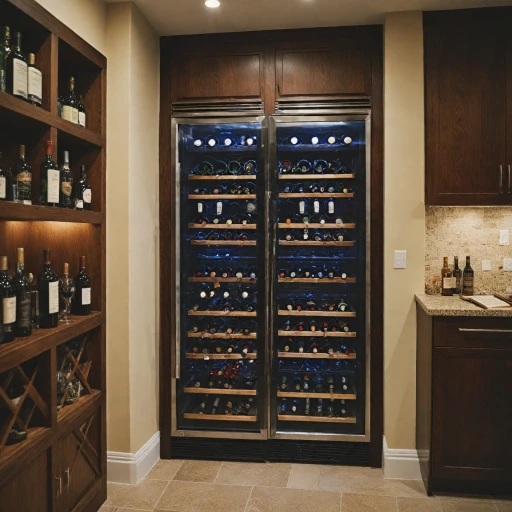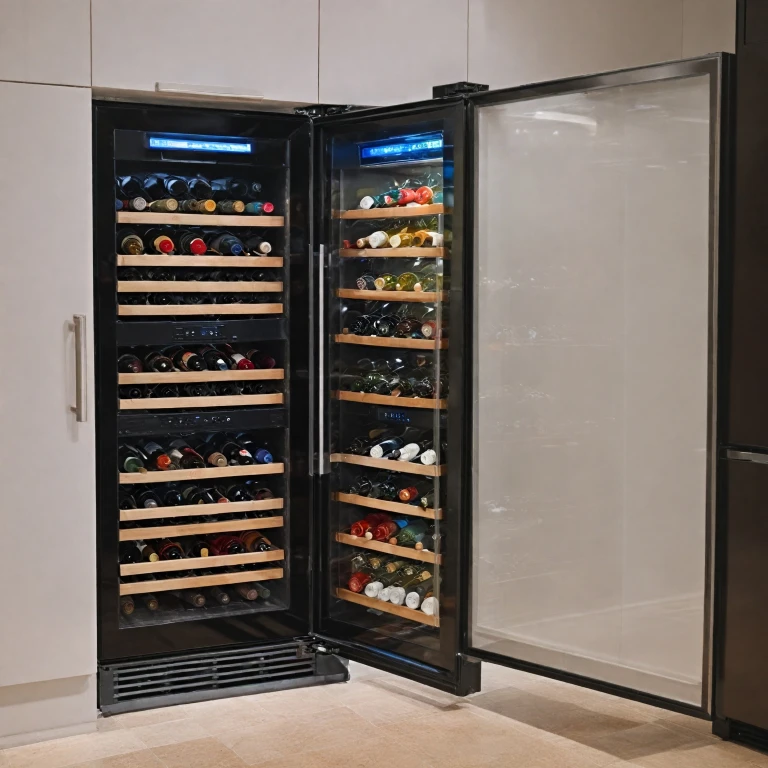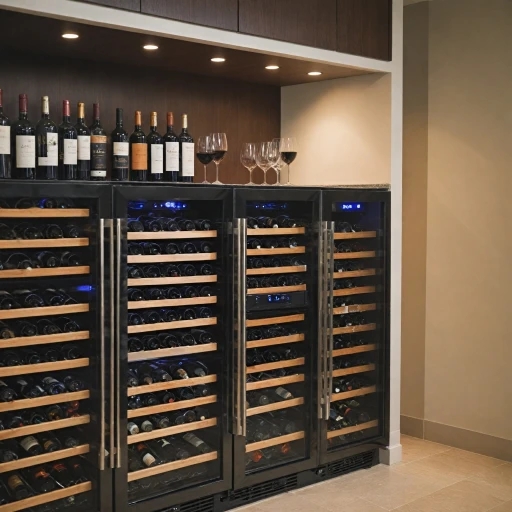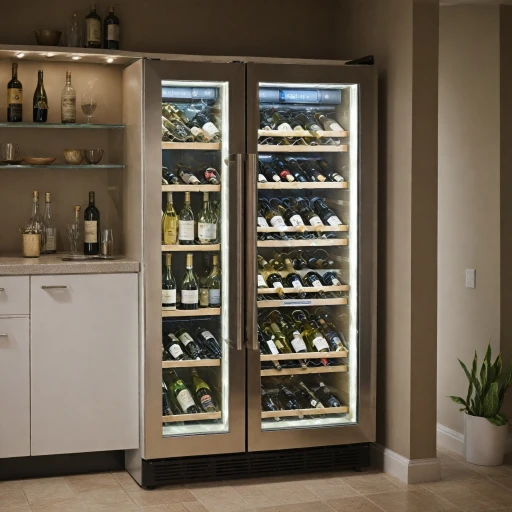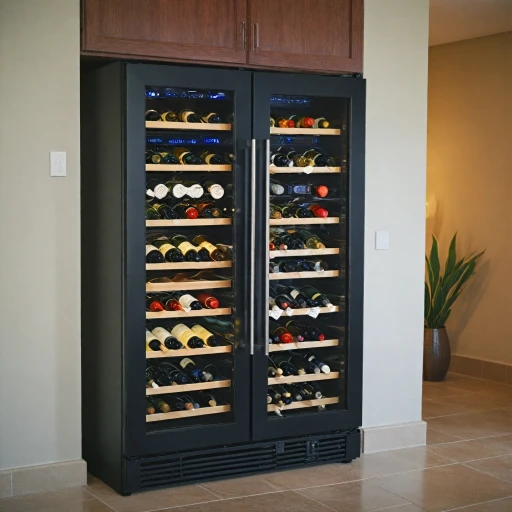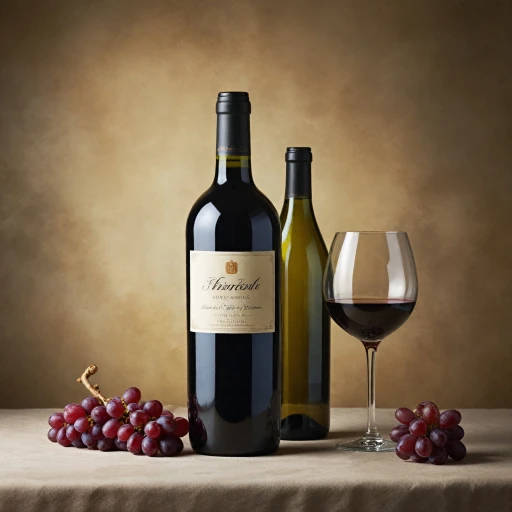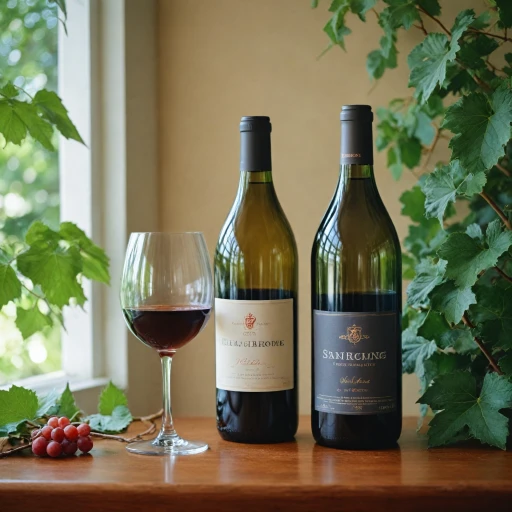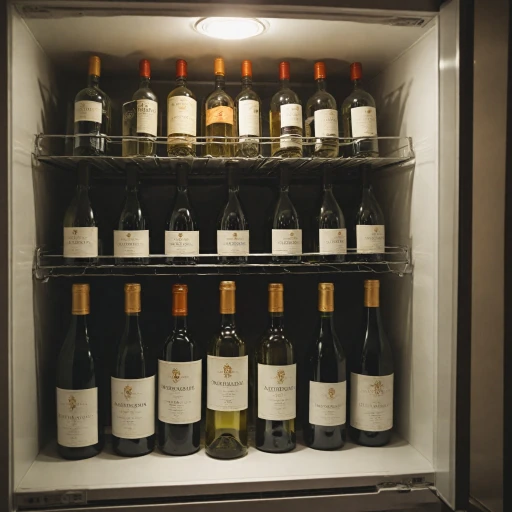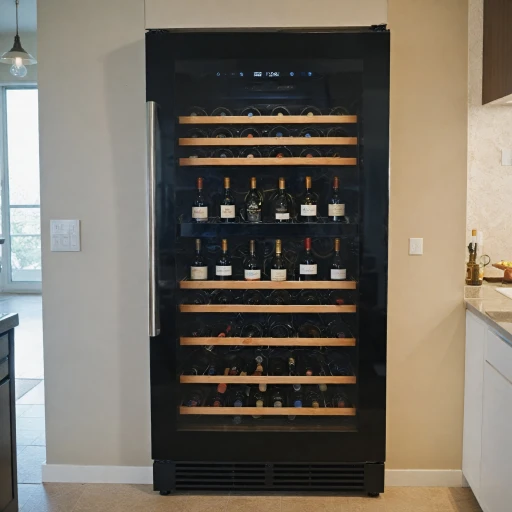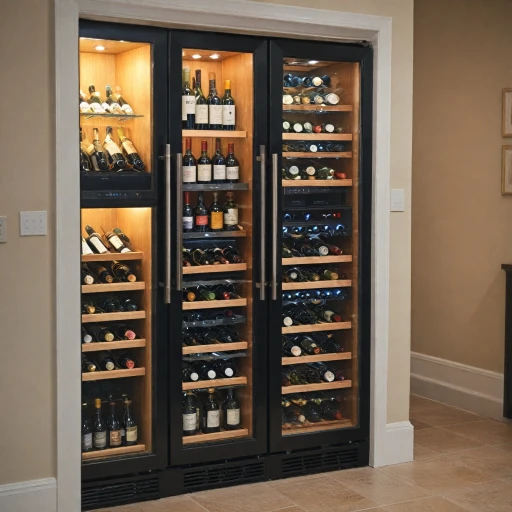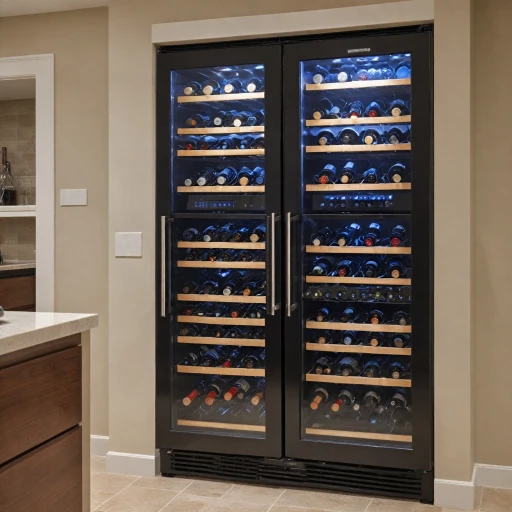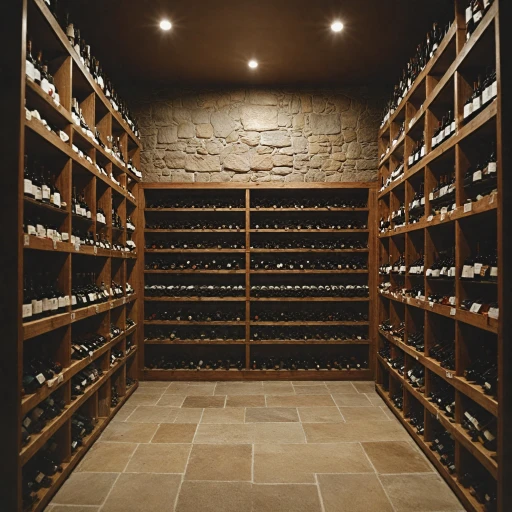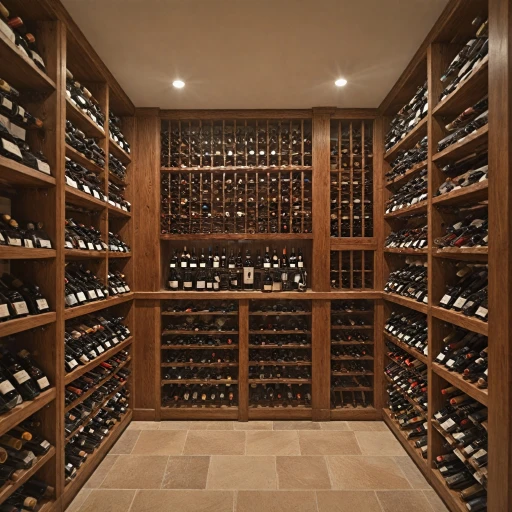Understanding Wine Fridge Temperature
Decoding the Significance of Temperature in Wine Storage
Understanding the delicate dynamics of wine fridge temperatures is pivotal for preserving the unique characteristics and flavour profiles of your wines. The fundamental purpose of a wine refrigerator or cooler is to provide a controlled environment that mimics an ideal cellar condition suitable for both short and long-term storage. Proper fridge temperature settings ensure that each bottle, whether it’s a full bodied red, a crisp white, or a sparkling delight, retains its intended quality and aroma.
The art of wine storage lies in maintaining a stable temperature that compliments the needs of diverse wine varieties. An incorrect storage environment can lead to deterioration over time, compromising your collection. Therefore, understanding the importance of temperature ranges for different types of wines can be gleaned by visiting experts who explored the nuances of optimal temperature range for wine fridges.
Ideal Temperature for Different Types of Wine
Perfecting the Wine Serving Environment
Every wine enthusiast knows that the optimal temperature settings play a significant role in wine preservation and enjoyment. Different types of wine require unique temperature ranges to bring out their best flavors and aromas, whether you are simply storing or serving them.
For white wines, these lighter, often crisper varieties are best served chilled. A temperature range of 45°F to 50°F is generally recommended, promoting their refreshing qualities. However, storing them slightly cooler at around 50°F can ensure that their freshness is maintained over time.
When it comes to red wines, these full-bodied selections typically thrive in a warmer environment. Serving temperatures between 60°F and 65°F are ideal to enhance their complexity. For storage, a slightly cooler setting, around 55°F, works well to preserve their flavors without hastening aging.
Many wine fridges include dual zone capabilities, allowing for the separation of reds and whites in different compartments. This feature ensures that each type of wine is stored at its specific ideal temperature, helping to maintain the quality of a variety of wines in a single appliance.
While these guidelines provide a standardized approach, personal preferences can vary. Some may enjoy their full-bodied red wines a touch cooler, whereas others might prefer their white wines slightly less chilled. Finding your perfect serving temperature can elevate your wine experience immensely.
Common Mistakes in Wine Fridge Temperature Settings
Common Mistakes to Avoid When Setting Wine Fridge Temperatures
Setting the right fridge temperature for your wine is crucial for maintaining its quality and flavor. However, many wine enthusiasts often make mistakes that could compromise their wine storage efforts. Here are some of the most common pitfalls to watch out for:
- Ignoring the Type of Wine: Different types of wine require specific storage temperatures. Full bodied red wines and lighter bodied red wines should ideally be kept slightly warmer compared to white wines. For instance, storing white wines at the same temperature as red wines could affect their delicate aromas and flavors. It's important to adjust the fridge temperature based on whether you're storing red, white, or both types in a dual zone wine fridge.
- Not Using a Consistent Temperature: Temperature fluctuations are detrimental in wine fridges. Consistent temperature ensures that wines age appropriately and maintain their intended taste profile. Uneven temperatures might result in faster aging or spoilage, especially in long term storage.
- Overlooking the Benefits of Dedicated Wine Storage: Utilizing a wine cooler specifically designed for wine storage, especially those with a dual zone feature, allows for more precise control over various wine types. Regular fridges are typically too cold and have dry environments, which are not ideal for wine storage.
Enhance your wine collection with a humidity-controlled wine fridge to maintain the quality of your cherished bottles.
- Setting Temperature Based on Personal Preference: While you might enjoy your wines at a particular serving temperature, it's essential to keep the wine fridge temperature at levels suitable for wine preservation. Adjust serving temperatures only when you're ready to enjoy a bottle.
Avoiding these common mistakes can lead to a noticeable difference in the enjoyment of your wines, ensuring they are served as the winemaker originally intended.
Adjusting Temperature for Long-term Storage
Fine-tuning Temperature for Prolonged Preservation
In the delicate art of storing wine, particularly for the long term, careful attention to the wine storage temperature is paramount. Unlike short-term wine serving conditions where wine fridges are set to ready whites and reds for serving, long-term storage necessitates maintaining a consistent and moderate fridge temperature.
Optimal wine storage in a wine refrigerator calls for a nuanced understanding of how different wines age gracefully over time. Full bodied reds, depending on their specific varietals, may require a subtle deviation from the general consensus that both red and white wines thrive at around 55°F (13°C). Despite this general guideline, every wine cooler model, from single to sophisticated dual zone wine coolers, offers varied settings to cater to specific wine needs and ideal conditions for term storage.
The challenge often lies in fine-tuning the temperature without causing fluctuations which can jeopardize the quality of the bottled treasures. Unlike wine serving temperatures, which are adjusted just prior to enjoyment, wine storage demands a steadfast environment. It’s imperative to contemplate future servings when setting your fridge temperature. The robustness of a well-stored bodied red will speak for itself when appropriately prepared and served, but only if the wine cooler’s settings have respected its aging process over months, or even years.
In practice, adjusting the settings in your wine fridge for long-term storage involves researching the particularities and needs of your specific wine collection. Multi-zone wine refrigerators offer superb flexibility allowing the user to store red wines and white wines under different zones with temperature precision. Understanding these subtle variances in keeping your wine cooler ideally prepared can markedly affect the wine’s longevity and the overall wine experience.
The Impact of Temperature Fluctuations
The Temperature Effects on Wine's Quality
Understanding the impact of temperature fluctuations on your wine storage can be crucial in maintaining the integrity of your bottles. When temperatures regularly shift, it can influence the shelf life of both red and white wines. Consistent fluctuations, even if minor, can cause the wine to expand and contract within the bottle, potentially compromising the cork's seal. This may lead to premature aging or oxidation, negatively affecting the wine's taste and aroma.
For full-bodied red wines and lighter white wines alike, maintaining an ideal temperature setting in your wine fridge is integral. A stable storage environment ensures the long term preservation of your collection, allowing each wine to be served at its peak condition.
It's important to consider the design of your wine cooler or refrigerator. Dual zone wine coolers offer a solution for maintaining different temperatures for different types of wine, accommodating both your bodied red wines and delicate white wines. Temperature wine control ensures every bottle, from rich reds to crisp whites, is stored in its optimal environment.
Moreover, long term storage in the wrong temperatures can lead not only to loss of flavor but also spoilage, even in a well-chosen wine fridge. Whether it’s a zone wine layout or a specified temperature wine cooler, understanding these elements surrounding temperature and wine storage is crucial for preserving wine quality over time.
Choosing the Right Wine Fridge for Your Needs
Picking the Perfect Wine Storage Solution
When it comes to choosing the right wine fridge for your needs, understanding the essentials of wine storage is crucial. A great starting point is to identify the type of wine you primarily enjoy. Different wines thrive under varied temperature conditions, and your selection can directly influence their quality and longevity.
For aficionados of red wines, a wine cooler that maintains the ideal serving temperature is key. Red wines, particularly full-bodied options, generally benefit from temperatures around 55°F to 65°F to preserve their complex flavors. On the other hand, if your collection leans more towards white wines, selecting a fridge that supports a cooler range, typically between 45°F and 50°F, will ensure these wines are served at their best.
Additionally, it's worth considering the size of your collection. If you have a diverse assortment of varietals or plan on expanding your collection, a dual zone wine refrigerator might be your best bet. These fridges allow you to store reds and whites simultaneously at their respective optimal temperatures.
Consider also the term storage requirements. For long-term storage, stability in the fridge temperature is vital. Consistent temperature wine storage minimizes the risk of degradation caused by temperature fluctuations, preserving the wine’s integrity over time. This ensures that whether it’s a bodied red or a delicate white, your wines will mature gracefully.
Finally, don't overlook the logistical aspects. Ensure the wine cooler you choose fits well within your home’s environment, both in terms of space and aesthetics. With the myriad of options available today, from compact designs for smaller spaces to expansive models for serious collectors, there’s a wine fridge to meet every need.
By aligning your preferences and needs with the right wine storage solution, you can ensure your wines are always served at their best, enhancing your overall wine experience.
